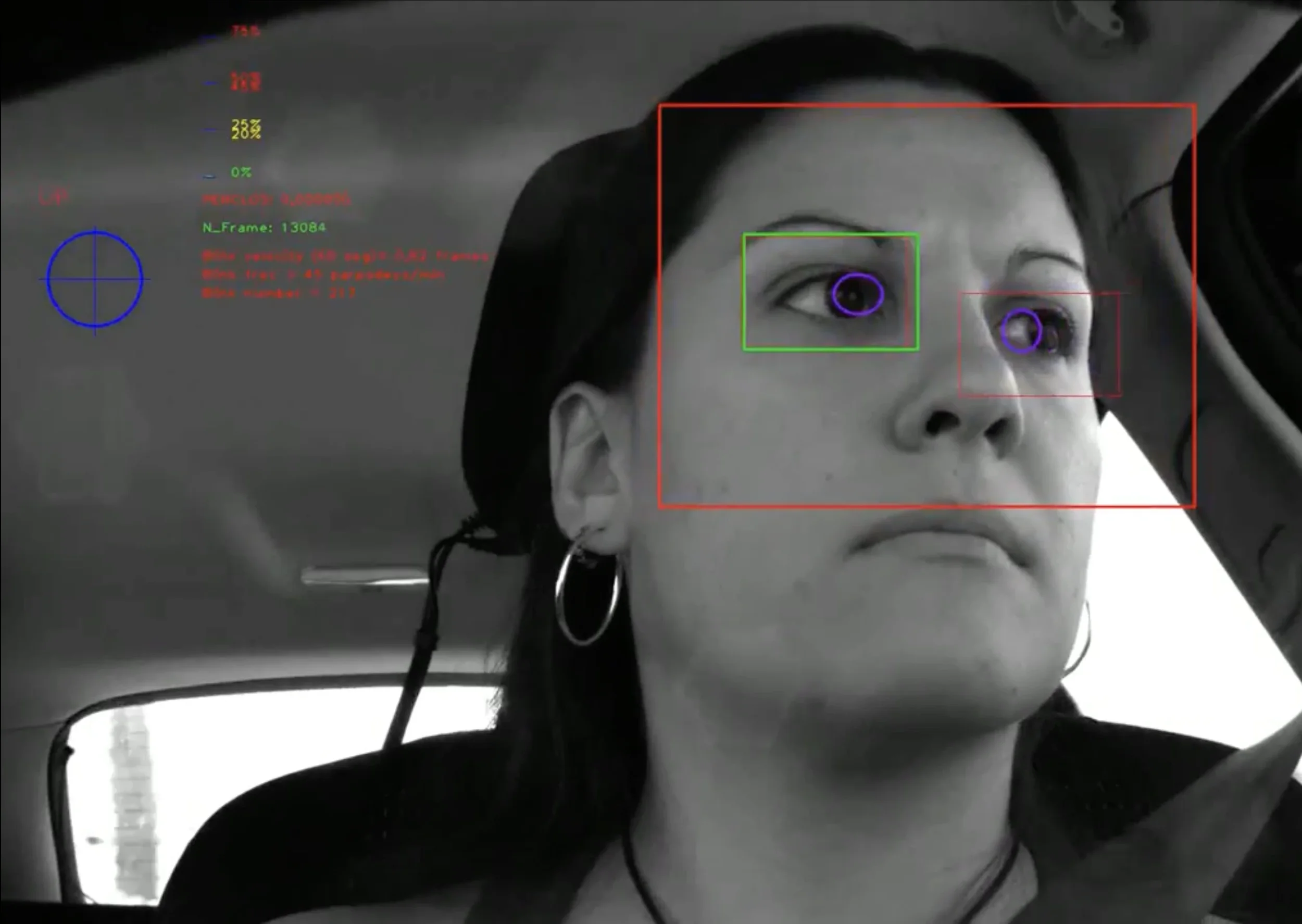QML at the Edge (via the Cloud): Early Evidence from EEG & Biosignals
Machine learning was used to perform a drowsiness detection test on this driver. To do this with QML would be a game-changer for improving road safety and many other areas, provided it isn’t overhyped as a “quantum advantage” promise.
Credit: Xylon / Visage Technologies
What hybrid quantum–classical ML has actually shown—and how to productise it
“Quantum machine learning” (QML) is often pitched as a leap. In wearables, it’s more likely a plug-in: a cloud microservice that slots into a classical pipeline and occasionally offers an edge on specific biosignal tasks. What matters is evidence—and a few credible studies now exist.
Multiple teams have explored EEG drowsiness detection with QML. A 2024 peer-reviewed paper reports proof-of-principle classification using variational quantum circuits (VQCs) after feature extraction, noting parity to modest improvements versus classical baselines on limited datasets—exactly the sober results risk committees look for. Meanwhile, quEEGNet and more recent QEEGNet architecture papers describe hybrid models that insert quantum layers inside established CNN/EEGNet stacks, offering a realistic route to experimentation without ripping out a working codebase.
What’s the commercial relevance? First, your wearable or clinical app can expose QML behind a stable inference API. Let customers toggle “quantum-assisted” modes in the cloud, preserving device battery life. Second, by treating QML as a feature flag, you keep governance sane: same inputs/outputs, extra telemetry on model behaviour, and versioned rollbacks if performance drifts. That makes pilots easier to approve in regulated environments.
Go-to-market should avoid “quantum advantage” promises. Instead, frame QML as a portfolio hedge: for some biosignal distributions (non-linear embeddings, very low SNR), a variational layer may learn a separation that a compact classical model misses at the same complexity. If not, you’ve still shipped a crypto-agile, well-instrumented AI stack. Buyers respond to operational discipline—A/B tests, pre-registered metrics (AUROC, latency, power), and honest reports when QML doesn’t help.
Security is not optional. If you’re collecting long-lived biometrics, move transport and key exchange to hybrid PQC patterns (TLS 1.3 hybrids; IKEv2 ML-KEM drafts). Anchor this to NIST’s FIPS 203/204/205 so CISOs have something official to cite, and borrow migration patterns from ETSI/NCSC guidance on crypto-agility and inventory.
Where next? Pair QML pilots with quantum-enabled sensors trials (OPM/NV). In contexts like fatigue monitoring or neurorehab, improved signals plus marginal model gains can compound into a meaningful product edge. Publish the boring stuff—pipelines, datasets, configs—so customers can reproduce results. The win in 2025–27 isn’t headline “advantage”; it’s being the vendor who can experiment safely.
Bottom line: treat QML as cloud middleware with a rigorous yardstick. If it helps, great; if not, your AI still gets better, your security is future-proofed, and your customers trust you more for telling the truth.
